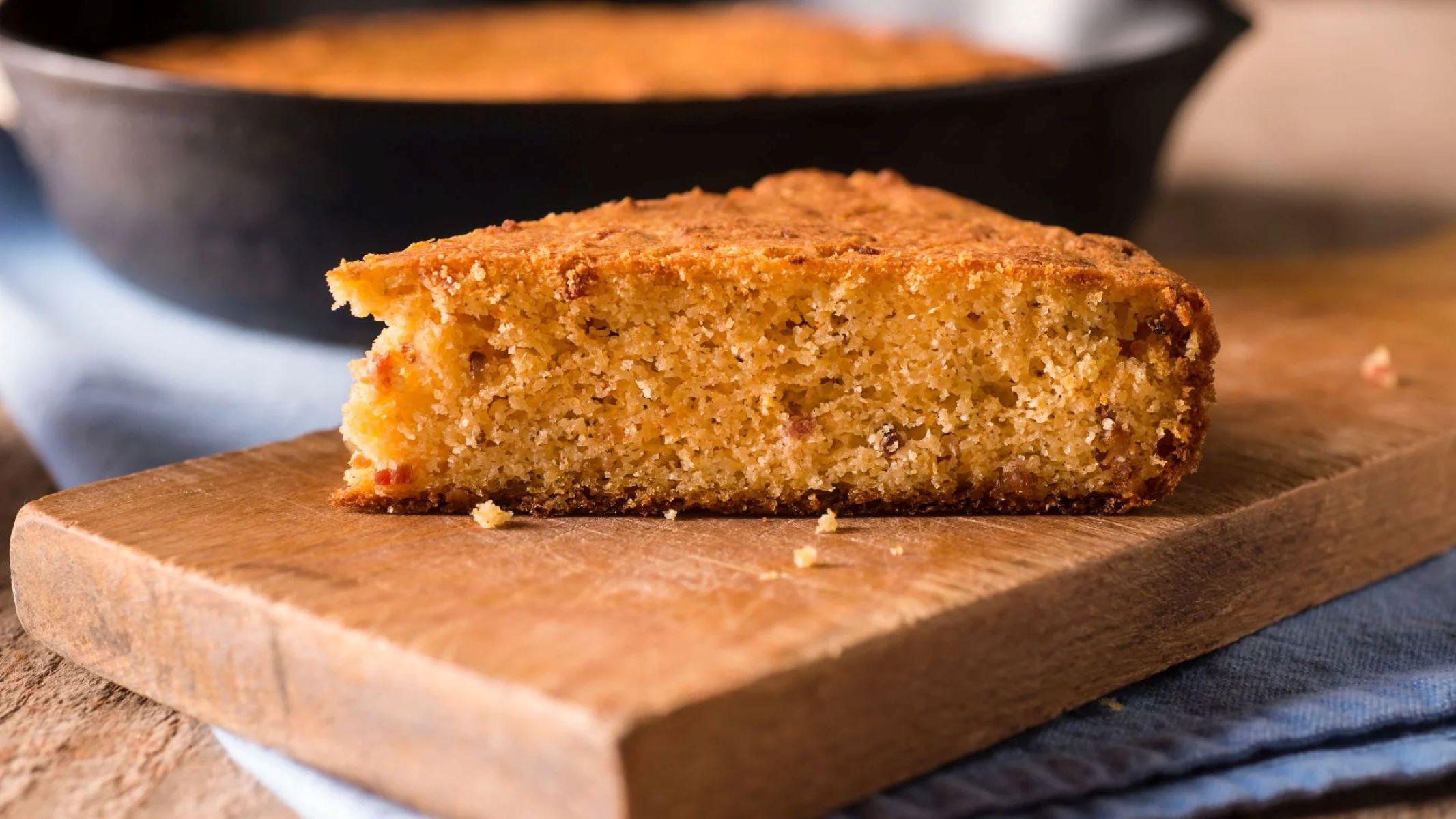Home>Health and Wellness>The Surprising Reason Diabetics Should Avoid Cornbread


Health and Wellness
The Surprising Reason Diabetics Should Avoid Cornbread
Published: January 28, 2024
Discover why diabetics should steer clear of cornbread and learn how it can impact their health and wellness. Explore healthier alternatives for managing diabetes.
(Many of the links in this article redirect to a specific reviewed product. Your purchase of these products through affiliate links helps to generate commission for Regretless.com, at no extra cost. Learn more)
Table of Contents
Introduction
When it comes to managing diabetes, dietary choices play a pivotal role in maintaining stable blood sugar levels. For individuals with diabetes, the selection of foods can significantly impact their overall well-being. One popular staple that has garnered attention in the realm of diabetic nutrition is cornbread. While this beloved comfort food is a cherished part of many culinary traditions, its effects on blood sugar levels may come as a surprise to those managing diabetes.
In this article, we will delve into the intricate relationship between cornbread and blood sugar levels, uncovering the hidden dangers that this seemingly innocuous dish poses for individuals with diabetes. Furthermore, we will explore alternative options that offer a healthier approach to satisfying the craving for comforting bread-based delights, all while keeping blood sugar levels in check.
Join us as we unravel the surprising reason why diabetics should exercise caution when it comes to indulging in the beloved classic, cornbread.
Understanding the Impact of Cornbread on Blood Sugar Levels
Cornbread, a beloved comfort food in many cultures, holds a complex relationship with blood sugar levels, particularly for individuals managing diabetes. The impact of cornbread on blood sugar levels is intricately tied to its composition and how the body processes its components.
The primary ingredients of traditional cornbread include cornmeal, flour, eggs, milk, and often sugar or honey. The high carbohydrate content in cornmeal and flour is a key factor contributing to the potential spike in blood sugar levels. When these carbohydrates are digested, they are broken down into glucose, leading to an increase in blood sugar levels. Moreover, the addition of sugar or honey further amplifies the glycemic impact of cornbread.
Additionally, the glycemic index (GI) of cornbread, which measures how quickly a particular food raises blood sugar levels, is relatively high. This means that consuming cornbread can lead to a rapid surge in blood glucose levels, posing a challenge for individuals striving to maintain stable blood sugar levels.
Furthermore, the absence of significant fiber content in traditional cornbread exacerbates its impact on blood sugar levels. Fiber plays a crucial role in slowing down the absorption of glucose, thereby preventing rapid spikes in blood sugar levels. In the context of cornbread, the lack of substantial fiber content fails to mitigate the rapid release of glucose into the bloodstream.
Understanding the intricate interplay of these factors is crucial for individuals with diabetes. Despite its comforting appeal, traditional cornbread's potential to disrupt blood sugar levels underscores the need for mindful consumption, especially for those managing diabetes.
In the subsequent sections, we will delve deeper into the hidden dangers of cornbread for individuals with diabetes, shedding light on the specific risks it poses and the healthier alternatives that can offer a more diabetes-friendly approach to enjoying bread-based delights.
The Hidden Dangers of Cornbread for Diabetics
The allure of cornbread, with its golden crust and comforting aroma, often overshadows the potential risks it poses for individuals managing diabetes. Despite its nostalgic appeal and widespread popularity, traditional cornbread harbors hidden dangers that can significantly impact blood sugar levels in individuals with diabetes.
One of the primary concerns lies in the high carbohydrate content of cornbread. The combination of cornmeal, flour, and added sugars can swiftly elevate blood glucose levels, posing a formidable challenge for individuals striving to maintain stable glycemic control. The rapid spike in blood sugar levels following the consumption of cornbread can disrupt the delicate balance that individuals with diabetes work diligently to uphold.
Moreover, the glycemic index (GI) of cornbread further compounds its impact on blood sugar levels. With a relatively high GI, cornbread can prompt a swift and substantial increase in blood glucose levels, potentially leading to hyperglycemia. This rapid surge in blood sugar levels not only poses immediate health risks but also contributes to long-term complications associated with diabetes.
Another critical factor contributing to the hidden dangers of cornbread for individuals with diabetes is the lack of substantial fiber content. Fiber plays a pivotal role in moderating the absorption of glucose, effectively preventing sharp spikes in blood sugar levels. However, traditional cornbread lacks significant fiber content, allowing for the rapid release of glucose into the bloodstream.
Furthermore, the high fat content in some variations of cornbread can impede insulin sensitivity, exacerbating the challenges of glycemic management for individuals with diabetes. The intricate interplay of carbohydrates, sugars, and fats in traditional cornbread underscores the multifaceted risks it presents for individuals striving to maintain optimal blood sugar control.
In light of these hidden dangers, it becomes evident that traditional cornbread may not align with the dietary goals of individuals managing diabetes. The potential to disrupt blood sugar levels and compromise glycemic control necessitates a cautious approach to incorporating cornbread into the diabetic diet.
As we navigate the intricate landscape of diabetic nutrition, it is essential to recognize the nuanced impact of beloved culinary staples such as cornbread. By understanding the hidden dangers it poses for individuals with diabetes, we can empower individuals to make informed dietary choices that support their overall well-being.
In the subsequent section, we will explore healthier alternatives to cornbread that offer a more diabetes-friendly approach to enjoying bread-based delights, providing individuals with viable options to satisfy their cravings while maintaining stable blood sugar levels.
Healthier Alternatives to Cornbread for Diabetics
In light of the potential challenges posed by traditional cornbread, individuals managing diabetes may seek alternative options that offer the comforting appeal of bread-based delights while aligning with their dietary goals. Fortunately, there are several healthier alternatives that cater to the nuanced needs of individuals with diabetes, providing satisfying options that prioritize blood sugar management without compromising on flavor and texture.
-
Almond Flour Cornbread: By substituting traditional cornmeal and flour with almond flour, individuals with diabetes can enjoy a lower-carbohydrate alternative that offers a delightful texture and nutty flavor. Almond flour boasts a lower glycemic index and higher fiber content compared to conventional flours, making it a diabetes-friendly choice for crafting delectable cornbread. Additionally, the natural sweetness of almond flour can complement the savory notes of cornbread, offering a nuanced flavor profile while supporting stable blood sugar levels.
-
Flaxseed Cornbread: Incorporating flaxseed meal into cornbread recipes presents a valuable opportunity to elevate the nutritional profile of this beloved dish. Flaxseeds are rich in fiber and omega-3 fatty acids, contributing to improved blood sugar regulation and heart health. By integrating flaxseed meal into cornbread recipes, individuals with diabetes can benefit from the added nutritional value while savoring the familiar taste and texture of this comforting staple.
-
Coconut Flour Cornbread: Coconut flour, renowned for its low carbohydrate content and high fiber composition, emerges as a promising alternative for individuals seeking a diabetes-friendly rendition of cornbread. The subtle hint of coconut flavor adds a delightful dimension to the cornbread, enhancing its appeal while offering a lower glycemic impact. Moreover, the high fiber content of coconut flour promotes satiety and supports stable blood sugar levels, making it an excellent choice for individuals managing diabetes.
-
Zucchini Cornbread: Embracing the versatility of zucchini in cornbread recipes introduces a creative twist that caters to the dietary preferences of individuals with diabetes. By incorporating grated zucchini into cornbread batter, individuals can elevate the nutritional content while infusing a subtle hint of freshness. Zucchini contributes to the fiber content of the cornbread, facilitating slower glucose absorption and promoting enhanced blood sugar control.
-
Cauliflower Cornbread: Leveraging the nutritional prowess of cauliflower in cornbread recipes offers a unique approach to crafting a diabetes-friendly rendition of this beloved classic. Cauliflower, renowned for its versatility and nutritional benefits, introduces a subtle earthy flavor and a wealth of essential nutrients to the cornbread. By replacing a portion of traditional flour with cauliflower, individuals can enhance the fiber content and nutrient density of the cornbread, fostering a more diabetes-conscious approach to enjoying this cherished dish.
Incorporating these healthier alternatives into the culinary repertoire of individuals managing diabetes empowers them to savor the familiar comforts of cornbread while prioritizing blood sugar management. By embracing these innovative variations, individuals can indulge in the rich culinary heritage of cornbread while nurturing their overall well-being, fostering a harmonious balance between dietary satisfaction and glycemic control.
Conclusion
In the realm of diabetic nutrition, the intricate interplay of dietary choices and blood sugar management holds profound significance for individuals striving to maintain optimal well-being. The exploration of cornbread's impact on blood sugar levels has illuminated the nuanced challenges it presents for individuals with diabetes. The hidden dangers stemming from its high carbohydrate content, elevated glycemic index, and limited fiber composition underscore the need for a cautious approach to incorporating traditional cornbread into the diabetic diet.
As we navigate the complex landscape of diabetic nutrition, it becomes increasingly clear that empowering individuals with viable alternatives is pivotal in fostering a harmonious balance between culinary satisfaction and blood sugar management. The journey of discovering healthier alternatives to traditional cornbread has unveiled a diverse array of options that cater to the nuanced needs of individuals managing diabetes. From almond flour and flaxseed variations to innovative renditions featuring zucchini and cauliflower, these alternatives offer a compelling blend of nutritional value, nuanced flavors, and satisfying textures, all while prioritizing blood sugar control.
By embracing these healthier alternatives, individuals with diabetes can savor the comforting essence of cornbread while nurturing their overall well-being. The integration of these innovative variations into their culinary repertoire not only enriches their dining experiences but also empowers them to make informed dietary choices that align with their health goals. Moreover, these alternatives serve as a testament to the transformative potential of diabetic nutrition, illustrating that flavorful and nourishing options abound, even within the constraints of dietary considerations.
In essence, the journey of exploring the impact of cornbread on blood sugar levels has transcended the realm of cautionary awareness, evolving into a celebration of culinary ingenuity and holistic well-being. By shedding light on the hidden dangers of traditional cornbread and unveiling a spectrum of healthier alternatives, this exploration serves as a beacon of empowerment for individuals managing diabetes, inspiring them to embrace a vibrant tapestry of flavors while safeguarding their blood sugar levels.
As we conclude this journey, it is evident that the surprising reason diabetics should exercise caution with cornbread has sparked a profound reimagining of culinary possibilities. Through informed choices and innovative adaptations, individuals with diabetes can forge a path that harmonizes the comforting allure of cornbread with the imperative of blood sugar management, fostering a narrative of resilience, creativity, and unwavering commitment to holistic well-being.















